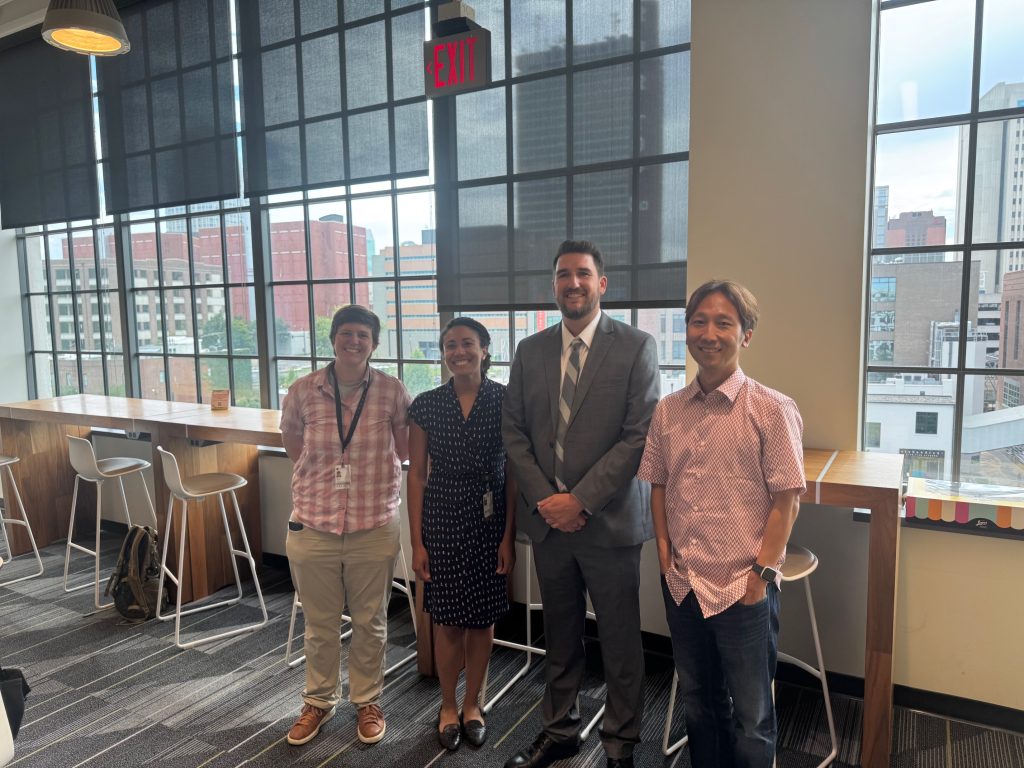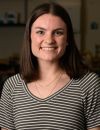News
- Ledford Scholarship II Applications Being Accepted
The Department of Physics awards the Randall Ledford Scholarship II once every four years to a high school student interested in majoring in Physics at Wake Forest University. This is a four-year half-tuition scholarship awarded to a promising incoming physics major attending Wake Forest University who is currently attending high school in North Carolina. For students applying for Fall 2026 admission, applications are currently being accepted with a deadline of February 15, 2026 for the scholarship consideration letter.
- Owen Ganter attends the Los Alamos Computational Condensed Matter Summer School

Owen Ganter near Los Alamos National Laboratory Graduate student Owen Ganter attended the Los Alamos Computational Condensed Matter Summer School (LACCMSS), a two week program at Los Alamos National Laboratory. The school was held from June 16th to June 27th. All travel, room, and board was provided by the lab. The school was sponsored by several institutes and centers within LANL.
The school curriculum covered a broad range of condensed matter physics topics, including both theoretical and experimental perspectives. Lectures were given by LANL staff scientists and invited speakers who were experts in their fields. Tutorials were also held to give a more hands-on dive into the material. Attendees were able to tour facilities at LANL, including the National High Magnetic Field Laboratory (NHMFL), the Los Alamos Neutron Science Center (LANSCE), and the Center for Integrated Nanotechnology (CINT).
The program was a great opportunity to network and share ideas with fellow students, instructors, and other scientists at the lab. Many social events were held including a barbeque, concert, and banquet. Students were able to explore the surrounding area, as there were many hiking trails through the desert and restaurants to try in town. According to Owen, it was a great experience as a student in LACCMSS, in which he expanded his knowledge of condensed matter physics, exchanged ideas with fellow students and scientists, and was able to gain a sense of the structure, operations, and culture of a U.S. National Laboratory.
- Congratulations to Dr. Nick Corak!
As a North Carolina Teaching Fellow, Nick earned a B.S. in Physics and a B.A. in Mathematics with Teacher Licensure in 2011 from the University of North Carolina Wilmington. After that, he received a M.A.Ed from Wake Forest University in Secondary Science Education. From 2012 to 2018, Nick was a math teacher in the Lyceum Academy of New Hanover High School in Wilmington, NC returning to graduate school at WFU in 2018. He completed my master’s degree in Mathematics from Wake Forest University in 2020, conducting research on a dynamical systems model of tropical cyclogenesis. From 2020 to 2025, Nick conducted research on ecosystem responses to drought and fire as a member of the Lowman Environmental Dynamics Lab, where his research was supported by the North Carolina Sea Grant and North Carolina Space Grant Graduate Research Fellowships. After earning a Ph.D. in Physics this July , Nick will begin a faculty position here at WFU as an Assistant Teaching Professor in the Department of Mathematics. (And if you’re counting, I think that makes Nick Corak a quadruple Deac!)

- Katie Koch awarded the 2025 SPIE Women in Optics Scholarship

“In May 2025, SPIE awarded $323,000 in scholarships to 74 outstanding SPIE Student Members, based on their potential contribution to optics and photonics, or a related discipline. The successful applicants were evaluated, selected, and approved by the SPIE Scholarship Committee.” See full press release here - Prof. A. Kandada named Z. Smith Reynolds Fellow
Congratulations to Professor Kandada for his dedication to teaching, mentoring and research.

